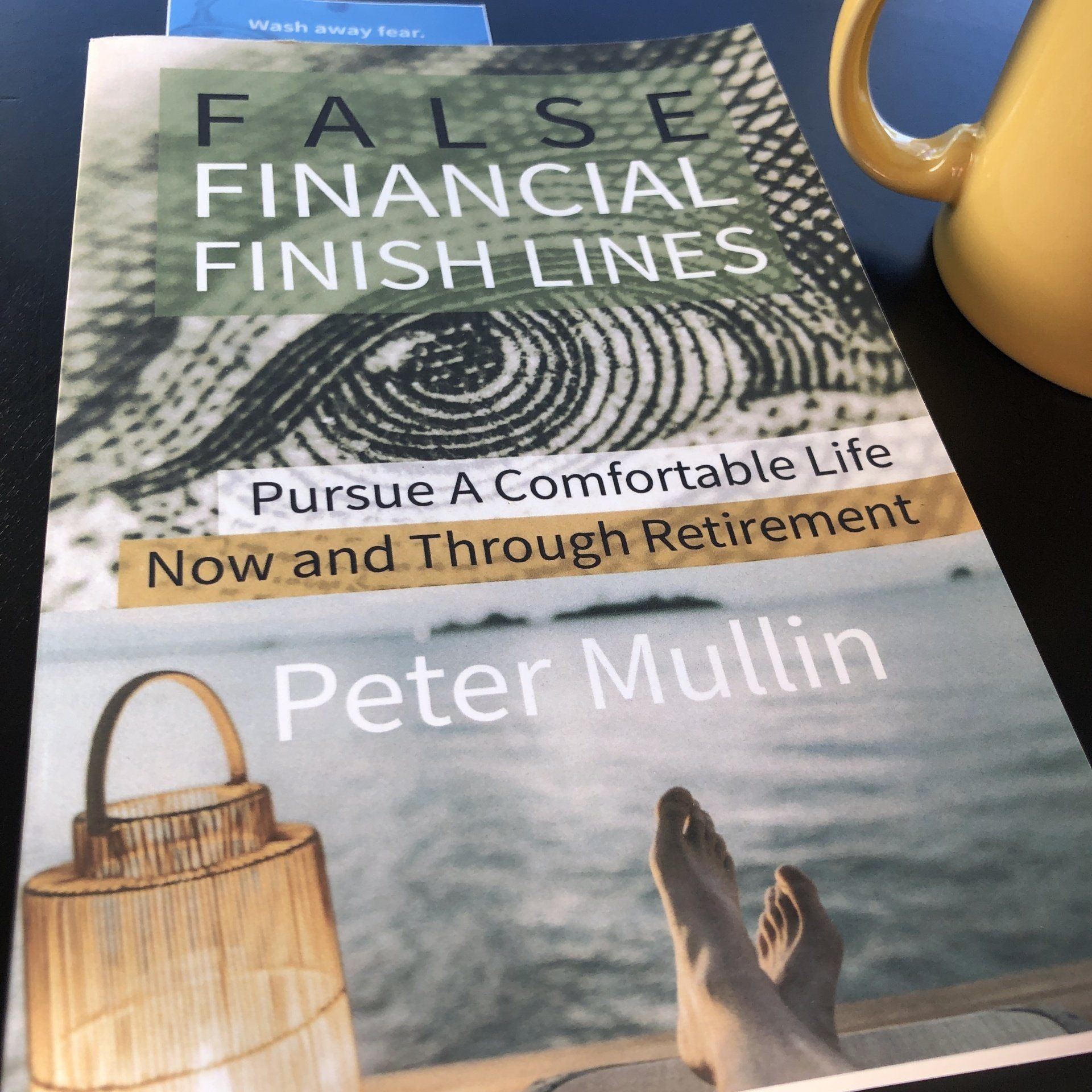The Social Security Administration Has Announced Cost of Living Adjustments & Tax Changes For 2021. Here's What You Need to Know

On Tuesday, October 13, 2020, the Social Security Administration released important facts and figures for 2021 - including cost-of-living adjustments (COLA) for retirees and tax changes for the currently employed.
The Good? Benefits Are Increasing
Those receiving Social Security benefits will see a 1.3 percent COLA increase in 2021. This change will impact around 70 million Americans - including 8 million SSI beneficiaries.1
For the average retiree receiving Social Security benefits in January 2021, this will translate to a roughly $20 increase in monthly benefits - $1,543 up from $1,523. For couples both receiving benefits, the average will increase to $2,596 from $2,563.1
Of note, this year’s COLA increase is lower than the previous two years - although, of course, a cost-of-living adjustment is never guaranteed in the first place. In 2009, 2010 and 2016, COLA bottomed out at zero percent. And in 2016, the COLA was a mere 0.3 percent - substantially lower than the 2.8 percent increase we saw in 2018.2
The Bad? Taxes Are Increasing Too (For Some)
For those still working, the amount of earnings subject to Social Security tax has increased 3.7 percent from $137,700 in 2020 to a maximum of $142,800 in 2021.1 Employees and their employers will each continue to pay 6.2 percent of applicable earnings toward the 7.65 percent combined Social Security and Medicare rate.1 The 3.7 percent increase in applicable income is only in reference to the Social Security portion of the combined tax rate. Self-employed individuals will still be responsible for paying the full 15.3 percent of the Social Security and Medicare tax rate.(1)
For reference, the maximum Social Security tax in 2021 for a high-earning employee would be $8,853.60 - or $17,707.20 total including both the employee and employer’s contribution. This is compared to 2020’s maximum of $8,537.40, or $17,074.80 total.
The Need To Know? Earning Limits For Retirees
For those under the Social Security Administration’s determined full retirement age who are receiving a paycheck while receiving SS benefits should be aware of 2021’s earning limit changes.
Currently, full retirement age is considered to be 66, if you were born between 1943 and 1954. Below is a chart provided by the SSA in regards to full retirement age:3
Year of Birth. (Full Retirement Age)
1943-1954 (
66 )
1955
(66 & 2 months )
1956 ( 66 & 4 months)
1957 (66 & 6 months )
1958 (66 & 8 months
)
1959 (66 & 10 months
)
1960 & later
(67 )
Those receiving benefits who have not yet reached full retirement age will be docked $1 in benefits for every $2 earned above $18,960 (or $1,580 per month) in 2021. This is an increase of $720 from 2020's $18,240 per year limit.
It’s important to note that this limit increases somewhat substantially for those who will be reaching full retirement age that year. For 2020, that income limit is $48,600 per year, or $4,050 per month. In 2021, retirees will see that limit increase to $50,520 per year, or $4,210 per month. Applicable income earned above this amount will be withheld at a rate of $1 dollar for every $3 earned above the limit.
Beginning in the month you reach full retirement age, you will no longer be subject to earning limits.
Keeping track of changes in tax rates and future income is an important part of having a well-established retirement plan. If you’re wondering how these changes will affect your own financial standings, reach out to your financial advisor for more information.
- https://www.ssa.gov/news/press/releases/2020/#10-2020-1
- https://www.ssa.gov/oact/cola/colaseries.html
- https://www.ssa.gov/pubs/EN-05-10035.pdf
Visit www.MullinWealth.com to learn more and to review states we are registered in.
The opinions voiced in this material are for general information only and are not intended to provide specific advice or recommendations for any individual.
Investing involves risk including loss of principal.No strategy assures success or protects against loss.
Securities and Advisory services offered through LPL Financial, A Registered Investment Advisor, Member FINRA/SIPC.
The LPL Financial registered representative associated with this site may only discuss and/or transact securities business with residents of the following states: AK, AR, AZ, CA, CO, FL, IA, ID, IL, MN, MO, NM, TX, WA, WI
The information being provided is strictly as a courtesy. When you link to any of the web sites provided here, you are leaving this web site. We make no representation as to the completeness or accuracy of information provided at these web sites.
This content is developed from sources believed to be providing accurate information, and provided by Twenty Over Ten. It may not be used for the purpose of avoiding any federal tax penalties. Please consult legal or tax professionals for specific information regarding your individual situation. The opinions expressed and material provided are for general information, and should not be considered a solicitation for the purchase or sale of any security.
- Mullin's take on the "4% Retirement Rule"
- Navigate "Bad Portfolio Weather"
- Tips to Optimize Social Security







Articles and Assets
What are your Priorities?
Well it’s the end of the year. I just searched on Google for “market outlook 2018.” I came up with a little over 58-million “results.”
So should you be investing in stocks in 2018? The quick answer: It’s likely a prudent part of your portfolio. But it depends on your circumstances, right?
It’s apparently popular to throw your hat in the ring.
A mantra that you hear among disciplined professionals is to “stay the course.”
Then you hear “sell high, buy low.”
Who’s right?
The relief of a disciplined strategy is that it can be tailored to you. And tailor we think you should.
Yes, it’s possible that an investor may not utilize stocks in their portfolio at all. Or you may decide to go “all in” with a diversified stock portfolio.
(Side effects from tailoring a strategy may include increased confidence & persistence, apathy toward daily market reports, and increased focus on what really matters.)
Let’s begin with the “Why” of investing for you. Then you can request 15-minutes on the phone discuss your “how.”
So “Why Should You Invest”
Life changes and our “why” of investing ought to transform with life. Some invest for sport – they like the risk/reward of investing – they’re in it for the thrill. I don’t hang with this crowd.
Most of us ought to invest for things we want. Our money & our goals are serious. By investing in a diversified portfolio we can pursue things we want.
1. Living A Comfortable Retirement: Retirement is a noun. It’s up to you to really design and live a retirement that reflects you.
2. Purchasing a Home: Home is a place to live. It can take a down payment.
3. Passing an Inheritance on to Family:
4. Student Loan Shield: This idea is important for many Millennial graduates. Student loans can dominate your budget. But instead of accelerating those payments, what if you paid your required payments, and then invested the additional money that you were going to pay against your loan balance?
5. Emergency Reserves: You probably have read that it’s prudent to keep a relative healthy amount of cash in your checking/savings. Once you’ve achieved that, then you can consider investing additional funds. Go a step further and consider a non-retirement account for you and your house. You can spend this on cars, vacations or use it just as described in #4.
The Dow Jones has seen positive results, so far, in 2017. It’s unusual and sort of uncomfortable as the independent financial advisor. Why is it uncomfortable?
What would sting & linger longer? Finding $20 in the parking lot? Or finding a $20 parking fine on your windshield?
We’ve been finding a lot of metaphorical “$20’s” (i.e. “positive results”) in our portfolios this year. So the second we find a parking fine (or a few in a row) we’ll be sure to ask if stocks are still the right place to park our money.
Complacency can work against us, Dear Clients. Just keep recalling your long-haul strategy and your “why” of investing.
***
Peter Mullin is an independent financial advisor registered through LPL Financial. He lives in Rogers, MN with his family. He was born and raised in St. Cloud, MN. Mullin Wealth Management is located in Waite Park, MN.
The opinions voiced in this material are for general information only and are not intended to provide specific advice or recommendations for any individual.
Investing involves risk including loss of principal.
There is no guarantee that a diversified portfolio will enhance overall returns or outperform a non-diversified portfolio. Diversification does not protect against market risk.
All performance referenced is historical and is no guarantee of future results.
All indices are unmanaged and may not be invested into directly. No strategy assures success or protects against loss.







